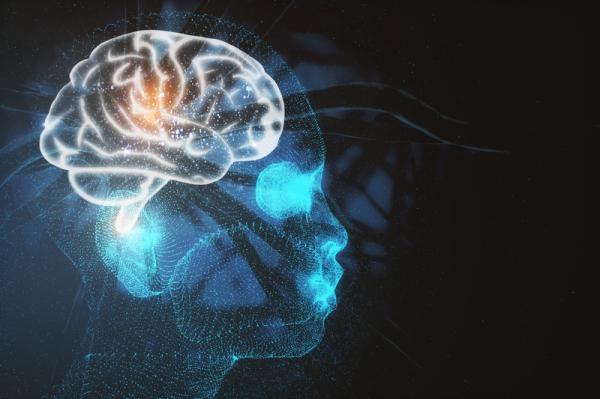The human brain is a mental structure that is made up of several particularities. On the one hand, human beings live experiences that leave ideas associated with perceived emotions. It is pertinent that there are variations according to the social, cultural, political and economic context that developed at certain times, since each person will process what they experienced in different ways. On the other hand, there is another area of approach that is represented by reasoning and the appeal to logic in situations of the past, present or future. In this sense, human beings have the ability to reflect on life and make decisions that have been previously analyzed. These two modalities coexist in the same person, and are glimpsed by the actions of the central nervous system.
In this PsychologyFor article, we will provide you with information about the differences between the emotional and rational brain.
What is the emotional brain and how does it work?
The emotional brain consists of ability to recognize various emotions that are experienced in order to develop a response according to them. In other words, this system is represented by the degree of adaptation that a human being can develop in the face of the external and internal stimuli that are presented. However, this directly influences decision-making based on the sensations that are perceived.
From the research of psychologist Daniel Goleman we can determine that the emotional brain is associated with the concept of emotional intelligence because it takes into account the level of intellectual elaboration along with the sentimental aspects. Although the brain is treated as an organic entity, this idea is related to the way it processes information.
On the other hand, the emotional brain has the functionality regulate motivation, confidence, self-control of impulses and the development of empathy. Its spatial location is located below the cerebral cortex and connects with the thalamus, amygdala, thalamus, hypothalamus, among others.
What is the rational brain and how does it work?
The rational brain constitutes the human being’s own capacity to develop concrete and abstract thoughts through logic In turn, this concept introduces reasoning as a starting point for producing social bonds through various higher cognitive functions. In relation to this, people can appeal to more complex processes than animals because they have this type of brain within the structure of the central nervous system.
For these reasons, it is the area in charge of the execution of planned activities, verbal processing, problem solving, consideration of variables prior to decision making, among others. Its location is in the left hemisphere of the central nervous system, within the cerebral neocortex.
Despite having less space than the emotional brain, its participation is crucial to adapt to the social and cultural variables that arise. Here you will find some Characteristics of a rational person.
Differences between the emotional and rational brain
To understand more precisely the characteristics of each sector of the cerebral cortex, it is necessary to carry out a synthesis that represents each of them. Next, we will describe the differences between the emotional and rational brain:
- decision making: while impulsivity is the quality that stands out in the emotional brain, in the case of the rational brain it is planning that directs the execution of actions.
- Non-verbal and verbal processing: On the one hand, the emotional brain focuses on the expression of non-verbal signals, such as gestures, tones of voice or intense emotions, among others. In contrast, the rational brain is responsible for analyzing complex data from reality, which provides a more elaborate response to the vicissitudes that arise.
- Thinking type: The emotional brain lacks the possibility of drawing abstract conclusions about various topics that may arise, since the interference of emotions prevents critical and objective judgment. Unlike this, the rational brain has the ability to reflect on various situations in reality. In turn, it intervenes in the connection between areas of human reasoning and allows the assembly of abstract ideas.
- Response mode: The emotional brain participates in the creation of direct and rapid responses to stimuli from reality. However, the rational brain offers the possibility of filtering out unfavorable emotions in certain situations, which provides a more harmonious and empathetic type of bond with people.
- Brain regions involved: The rational brain involves the prefrontal cortex, responsible for critical thinking, planning, and impulse control. For its part, the emotional brain involves the amygdala and the limbic system, responsible for processing and regulating emotions.
- Processing speed: The rational brain processes information more slowly and consciously through deep analysis. On the contrary, the emotional brain acts more quickly and automatically, generating rapid emotional responses to stimuli.
- Results awareness: The rational brain is usually more aware of the long-term implications and results of decisions, as opposed to the emotional brain which can generally be more oriented towards immediate satisfaction and emotional rewards.
- risk taking: While the rational brain evaluates risks and benefits with a focus on safety and risk mitigation, the emotional brain may be more willing to take risks based on the person’s emotions and intuition.

This article is merely informative, at PsychologyFor we do not have the power to make a diagnosis or recommend a treatment. We invite you to go to a psychologist to treat your particular case.
If you want to read more articles similar to Differences between the emotional and rational brain we recommend that you enter our Cognitive Psychology category.
Bibliography
- Molina de Colmenares, N. (2002). Rational intelligence versus emotional intelligence: implications for comprehensive education. Laurus Magazine, 8 (14), 61-70.








